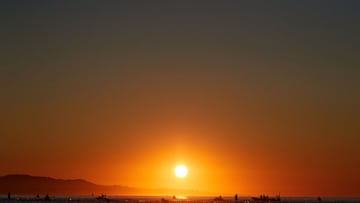When will the Sun die?
Scientists estimate that the Sun has about 10 billion years before it dies, turning into gas and dust, after it becomes a Red Giant, then a White Dwarf.

The Sun is approximately 4.6 billion years old. Scientists are able to make this calculation based using the age of other objects in the Solar System that they believe formed at the same time.
Until fairly recently, the scientific community hypothesized that when the Sun died, it would become a planetary nebula, that is, a luminous ball of gas and dust.
Now, according to Science Alert, a consensus has shifted and while the Sun is still expected to become a planetary nebula, it will be much larger than previously imagined.
— Dubai Astronomy Group (@dubaiastronomy) August 8, 2019
After observing the lifespan of other stars, astronomers believe that the sun has about 10 billion more years of life left. For mankind, should humans still be on planet earth, it will be time to figure out how to get off Earth and, above all, where to go. However, this timeline is artificial and humans have far less time to figure out what they will do when the Sun dies because the star increases its brightness by 10% every billion years or so. Until it reaches the end of its life, the Sun will transform into a Red Giant and a White Dwarf, which may not be able to sustain human life.
What is a planetary nebula?
Astrophysicist Albert Zijlstra of the University of Manchester described a planetary nebula by explaining the beginning phase of star death by saying "When a star dies it ejects a mass of gas and dust – known as its envelope – into space. The envelope can be as much as half the star’s mass. This reveals the star’s core, which by this point in the star’s life is running out of fuel, eventually turning off and before finally dying."
According to the AstroAficion portal, a planetary nebula is comprised mostly of hydrogen and helium.
Types of planetary nebulae
There are many types of nebulae, which form at different stages of the star's life; the beginning and the end. Planetary nebulae received thier name because of their appearance which some see as similar to that of a planet.
Related stories
Nebulae are common within the universe, and some of the forms they take have been named as they were identified including the Helix Nebula, the Cat's Eye Nebula, the Ring Nebula, and the Bubble Nebula.
The Hubble telescope published on its Twitter profile the appearance of the planetary nebula Hen 2-437. This star has symmetrical wings that form a gaseous outer layer characteristic of a dying star.
Hen 2-437, a planetary nebula located within the north constellation of Vulpecula (the Fox).
— Hubble Space Telescope (@HubbleTelescope) September 9, 2021
Those symmetrical, outstretched “wings” are the gaseous outer layers of a dying star: https://t.co/Pz8JQ9KMry pic.twitter.com/5IvcpjaF9J